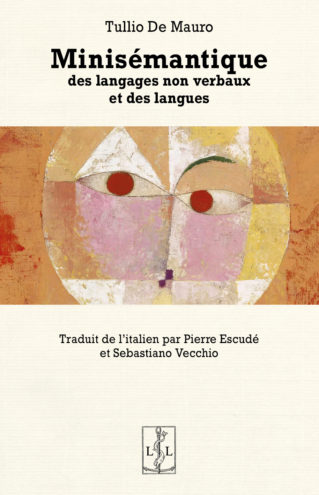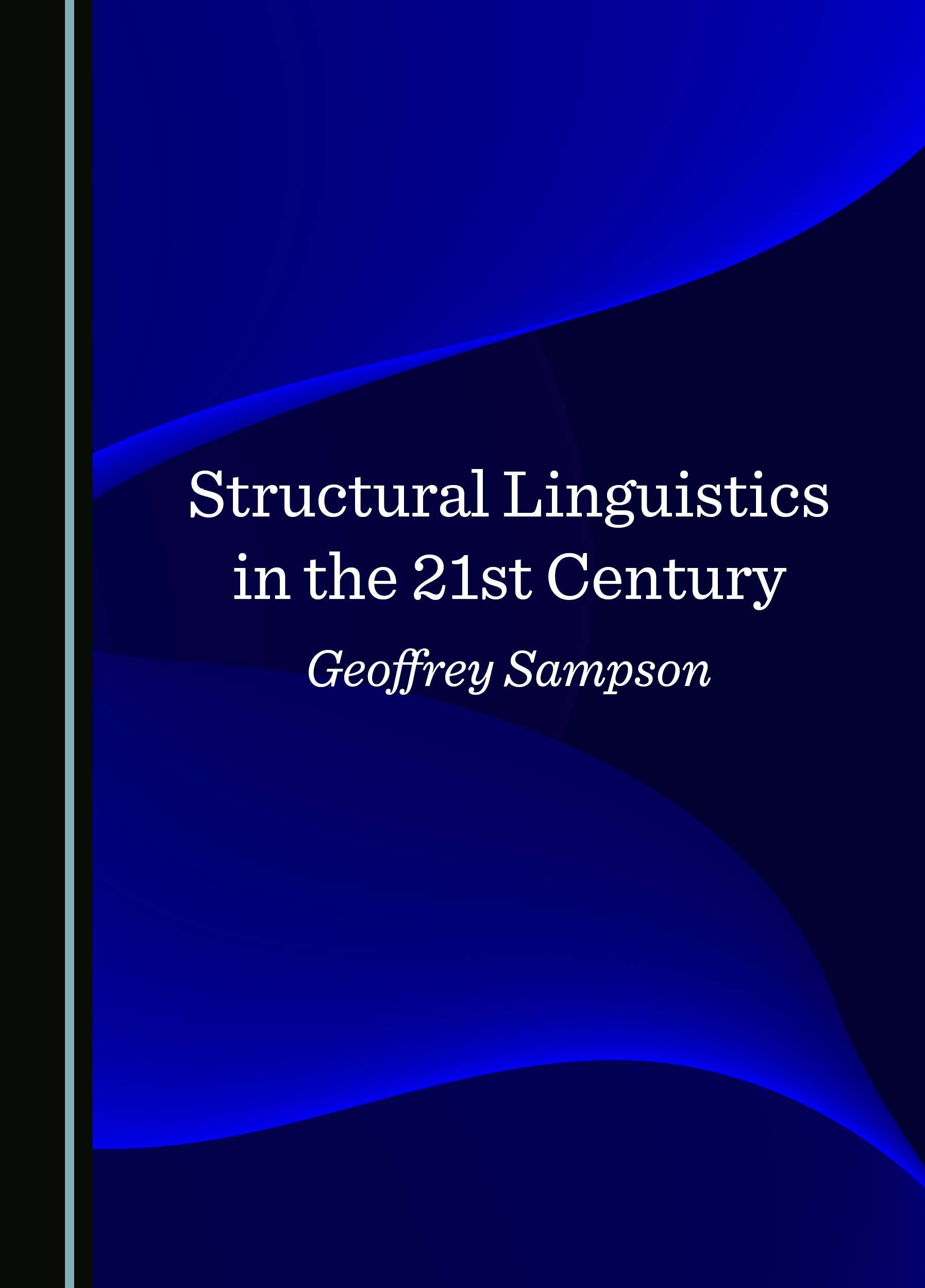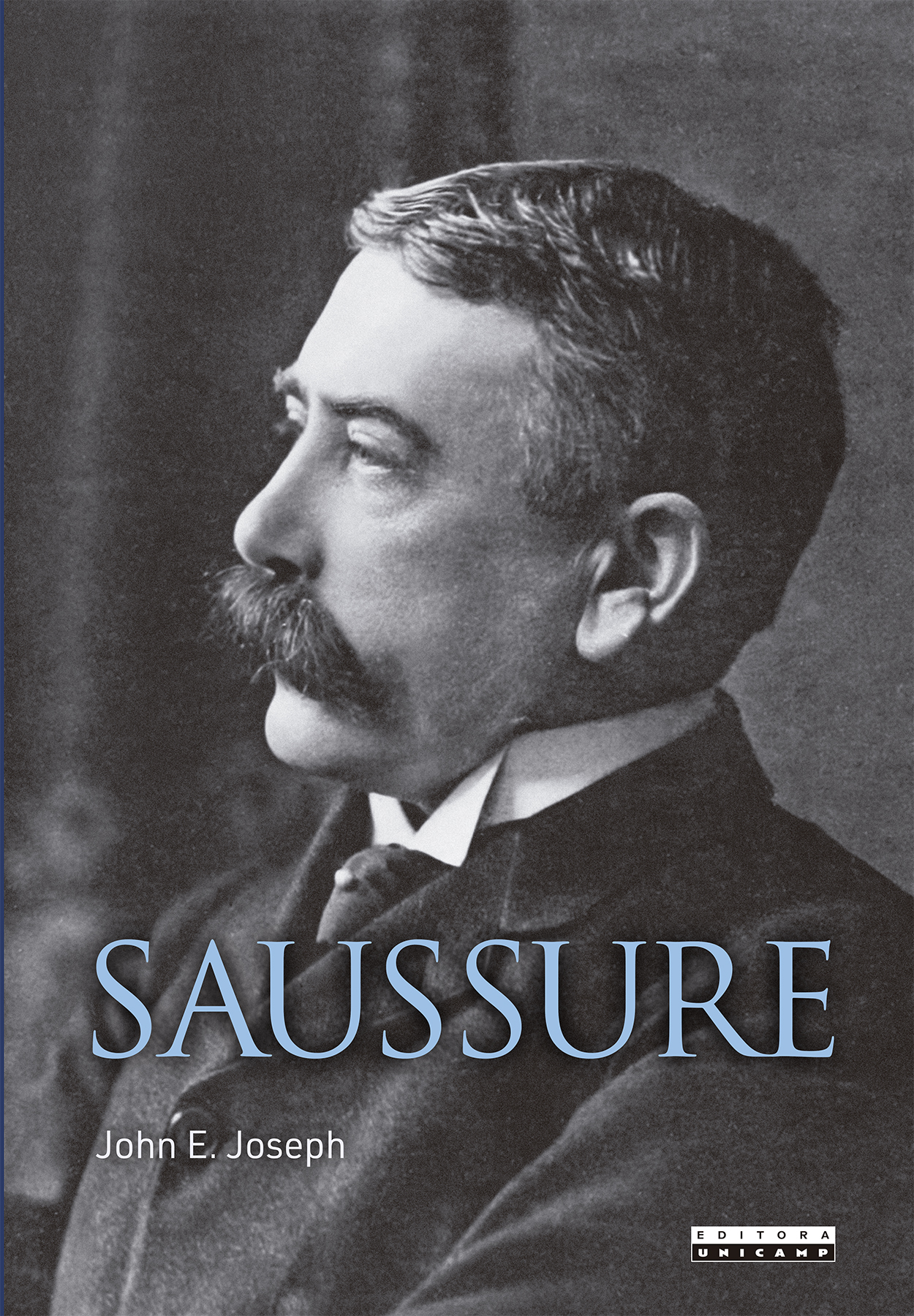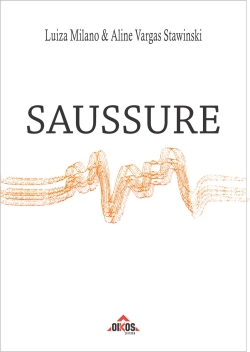Cahiers Ferdinand de Saussure, volume 75 (2022), édité par Ekaterina VELMEZOVA, Genève, Librairie Droz, 2025, 248 pages, ISSN : 0068-516X, ISBN-13 : 978-2-600-06615-0, € 63,30
Date de première publication : 17 Février 2025
Voir la notice de l’Éditeur.
Ce numéro en version numérique : https://revues.droz.org/CFS/issue/view/CFS_75
Table des matières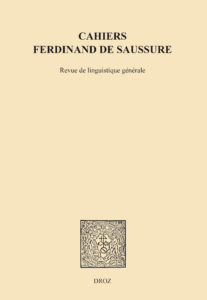
I Éditorial
– À nos lectrices et à nos lecteurs (Ekaterina VELMEZOVA) [Texte intégral]
II Articles
– Gabriel BERGOUNIOUX, De l’emploi du génitif absolu en sanscrit (1881) et l’étude de la morphologie sanskrite dans l’œuvre de Saussure [Résumé] [PDF à l’achat]
– Giuseppe COSENZA, L’émergence et l’évolution de la sémiologie chez Saussure (1881-1894) [Résumé] [PDF à l’achat]
– Franco FANELLI, F. de Saussure and inner Speech. A reading proposal of CLG 98 [Résumé] [PDF à l’achat]
– Ahmed KHARBOUCH, La dualité anthropologique convention sociale / sujet individuel dans la sémiologie saussurienne [Résumé] [PDF à l’achat]
– Martina MECCO, Roman Jakobson and Slavische Rundschau (1929-1939) [Résumé] [PDF à l’achat]
– Anne-Gaëlle TOUTAIN, Linguistique et biologie : de l’idéologie scientifique au scientisme [Résumé] [PDF à l’achat]
– Denis ZOLOTUKHIN, Traduire « De la double essence du langage » en Russe [Résumé] [PDF à l’achat]
III Documents
– John E. JOSEPH, Saussure’s Last Linguistic Studies: An Introduction to and English Translation of “On Latin compounds of the agricola type” (1909) and “Indo-European adjectives of the caecus ‘blind’ type” (1912) [PDF à l’achat]
– Monica BALLERINI. Francesca MURANO, Giovanni Flechia et son exemplaire du Mémoire [PDF à l’achat]
IV Lectures critiques
– Cindy GERVOLINO, Perspectives croisées sur le diagramme et le geste. À propos de Francesco La Mantia, Charles Alunni, Fernando Zalamea (dir.), Diagrams and Gestures. Mathematics, Philosophy and Linguistics, Springer, Londres, 2023 [PDF à l’achat]
V Comptes rendus
– Frederick J. Newmeyer, American Linguistics in Transition. From Post-Bloomfieldian Structuralism to Generative Grammar, Oxford, Oxford University Press, 2022 (G. Cosenza, C.A. Forel) [Texte intégral]
– Bent Sørensen and Torkild Thellefsen (eds.), Ferdinand de Saussure in Contemporary Semiotics, Bordeaux, Presses Universitaires de Bordeaux, 2024 (F. Murano) [Texte intégral]
– Ekaterina Velmezova and Emanuele Fadda (eds.), Ferdinand de Saussure today: semiotics, history, epistemology, special issue of Sign Systems Studies, 50/1, 2022 (T. Drobysheva) [Texte intégral]
– Lorenzo Cigana, Hjelmslev e la teoria delle correlazioni linguistiche, Roma, Carocci, 2022 (E. Fadda) [Texte intégral]
– Jean-Louis Chiss, Idéologies linguistiques, politiques et didactiques des langues, Limoges, Lambert-Lucas, 2022 (E. Velmezova) [Texte intégral]
VI Chroniques du Cercle
– De l’héritage intellectuel Saussurien à l’école doctorale 2023. « L’histoire de la linguistique dans le miroir de l’histoire de la sémiotique » (D. Fargues, D. Zalesskaya) [Texte intégral]
– Traduire Saussure aujourd’hui (P.-Y. Testenoire) [Texte intégral]
Résumés
Gabriel BERGOUNIOUX (Université d’Orléans), De l’emploi du génitif absolu en sanscrit (1881) et l’étude de la morphologie sanskrite dans l’œuvre de Saussure
Abstract: The limits of the subject that Saussure chose for his PhD were a reaction to the requirements of an academic degree. The objections to the Mémoire had convinced him to restrict himself to a philological work whose data he could circumscribe and analyse in a limited time. This article examines the design of the PhD in order to establish its main results, highlighting a number of points of interest such as the artefacts of literacy on grammar, the production of interpretation shared between inflection and context or the attribution of a value (concessive clause), despite the absence of a direct formal mark. The second part examines Saussure’s other contributions on the Sanskrit language as a way to exemplify Indo-European facts or to come to terms with Hélène Smith’s glossolalia.
Keywords: Sanskrit, Morphology, Inflection, Glossolalia.
Retour à la Table des matières
Giuseppe COSENZA (Università della Calabria), L’émergence et l’évolution de la sémiologie chez Saussure (1881-1894)
Abstract: This paper is part of a reconstruction of Ferdinand de Saussure’s semiology. The reconstruction is based on a terminological inquiry into different terms related to semiology (fr. sémiologie). The occurrences of terms were extracted from different Saussurean texts written during the period between 1881 and 1911. The paper also contains two hypotheses about the source of Saussure’s semiology. However, for reasons of space, the detailed analysis of the values of the term “semiologyˮ and related terms is restricted to the period 1881-1894. Our analysis takes up and extends Chidichimo’s essay (2014) on the term “semiologyˮ; the article integrates and clarifies Chidichimo’s analysis of the term “semiologyˮ into a broader and more precise view. Our study shows that the emergence of semiology as a science of signs went through several stages in Ferdinand de Saussure’s thought before being established as a science.
Keywords: Semiology, Sémiologie, History of semiotics, Theory of signs.
Retour à la Table des matières
Franco FANELLI (independent researcher), F. de Saussure and inner Speech. A reading proposal of CLG 98
Abstract: The purpose of this article is to highlight what topics are actually covered in a particular short passage of the Cours de linguistique générale and to propose its correct interpretation. The passage may seem obscure as it lacks, in our view, an explicit reference to inner speech. The manuscript sources confirm the omission and support the argument that in this passage Saussure was thinking precisely of the langage intérieur. In the last part of the article, we examine the Saussurean sources about inner speech. In particular, we consider La parole intérieure by Victor Egger (1881), a wide-ranging book that deals with inner speech. The fact that Saussure read and annotated this work is a relevant clue that inner speech is truly a topic of the passage we discuss in this essay.
Keywords: Course in General Linguistics, Manuscript sources, Inner speech, Victor Egger.
Retour à la Table des matières
Ahmed KHARBOUCH (Université Mohamed Premier, Oujda, Maroc) La dualité anthropologique convention sociale / sujet individuel dans la sémiologie saussurienne
Abstract: Saussure is generally recognized as the one who, together with Peirce, laid the foundations of modern semiotic thought. His influence, like that of the American, is indeed diffuse and crosses different schools and trends in current semiotic research. An essential feature, however, differentiates him from the American philosopher, namely that he puts forward, in his conception of the “science of signs”, a very clear anthropological orientation. This is highlighted, as we will try to show, in the way in which he conceives semiosis as the encounter between the particular “thought” of the individual and the different semiological institutions of society. This necessary encounter within the semiological fact between the subject and the convention constitutes the central duality of the semiotic thought of the Genevan and explains why his semiology is not a formal science.
Keywords: Duality, Anthropological aiming, Semiological institution, Speaking subject, Collective consciousness, Social convention.
Retour à la Table des matières
Martina MECCO (Sapienza University of Rome / Charles University of Prague) Roman Jakobson and Slavische Rundschau (1929-1939)
Abstract: In 1929-1939, during his stay in Czechoslovakia, Roman Jakobson collaborated intensively with the Prague German-language journal Slavische Rundschau (Slavic Review). The periodical was founded and run by two German Slavists affiliated with the Deutsche Universität Prag, Gerhart Gesemann and Franz Spina. Being the head of Slavische Rundschau’s Ostslavisches Referat (East Slavic Section), Jakobson had to handle the correspondence with scholars from Russia, Ukraine and Belarus and edit or co-edit their contributions. Slavische Rundschau’s collection, which was never processed, contains an extensive number of materials related to Jakobson’s activity in the journal. This article aims to give a preliminary analysis of these materials (correspondence and editorial documents). Due to their importance, particular attention will be given to correspondence Jakobson received from Russian, Ukrainian, and Belarusian scholars (mainly linguists or philologists) and institutions.
Keywords: Roman Jakobson, Slavische Rundschau, Correspondence, Czechoslovakia, German press.
Retour à la Table des matières
Anne-Gaëlle TOUTAIN (Université de Berne / Laboratoire « Histoire des théories linguistiques »), Linguistique et biologie : de l’idéologie scientifique au scientisme
Abstract: In this article, we show that the incursions of linguists into biology, from Schleicher through aphasiology to evolutionary linguistics, have created an unchanged space, the permanence of which lies in the absence of a break with the representation of language as an entity. This break, made by Saussure, nonetheless remained a dead letter in linguistics, whose relationship with biology has since been placed under the sign of scientific ideology, in the sense of Georges Canguilhem, coupled with reductionism. These relationships are established in place of a definition of language, and within the framework of the definition of common knowledge. Theoretical elaboration is then replaced by the spatialization and temporalization of this definition, spatialization and temporalization constituting the elective axes, respectively, of aphasiology and evolutionary linguistics.
Keywords: Synchrony/Diachrony, Organicism, Naturalism, Structuralism, Cognitivism, Biolinguistics, Evolutionary linguistics.
Retour à la Table des matières
Denis ZOLOTUKHIN (Université Paris Cité / Laboratoire « Histoire des théories linguistiques »), Traduire « De la double essence du langage » en Russe
Abstract: The translation of Saussurean texts and terminology has become a science in its own right. The discovery of new documents during the 20th century provided material that not only advanced this field but also presented numerous challenges, compelling translators to rethink existing translations. The aim of this paper is to demonstrate the features of the translation process into Russian of the manuscripts titled De la double essence du langage discovered in 1996. Going through the history of existing Russian translations of Saussure’s texts, the author takes into consideration terminological, philological and epistemological aspects of the translation of this text which remains largely unknown to Russian scholars, as well as suggesting strategies that can be applied to solve different issues caused by the particular form, content and context of these manuscripts.
Keywords: Scientific translation, Russian language, Saussurean terminology, Saussurean manuscripts, De la double essence du langage.
Retour à la Table des matières


